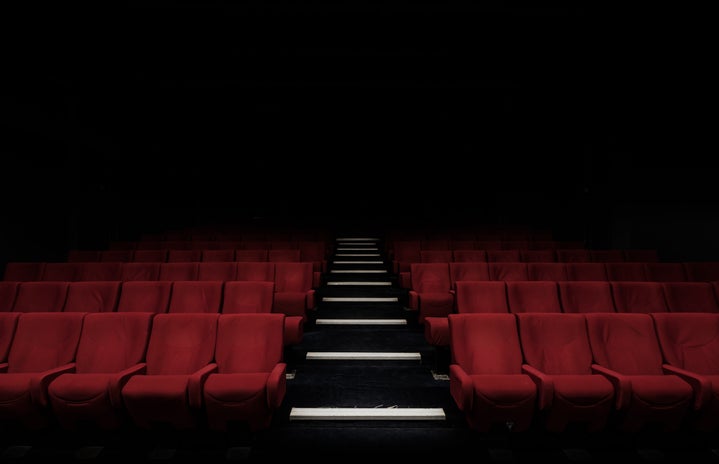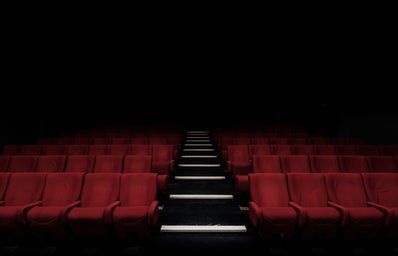Content warning: This story includes references to mental illnesses and obesity
**Spoilers ahead**
Within the first week from its February 3rd opening in the U.K., The Whale racked up US $16 million in box office earnings. An A24 production directed by Darren Aronofsky (Black Swan (2010), The Good Nurse (2022)), The Whale is a film adaptation of Samuel D. Hunter’s homonymous play. The film treads on the territory of ‘psychomachia’ and tackles profound themes of identity, compassion, forgiveness, and imperfections – often using artistic techniques to perpetrate the varying morals we encounter by the film’s end.
We are introduced to the protagonist through a zoom-esque setting. Students mosey about, eating or looking around the screen as their professor speaks. Next, the camera then zooms in slowly toward a black box, we are finally introduced to the protagonist, Charlie, interpreted by Brendan Fraser (The Mummy (1999-2008), School Ties (1992)). Our first exposure to Charlie’s visual appearance presents itself in a rather staggering scene through which we encounter him undergoing an act of self-pleasuring, thus, setting the tone for the rest of the film as we quest to uncover Charlie’s own story.
The camera serves as a tool that foreshadows the film’s events and the unraveling of Charlie’s own conscience, at least as intended for us, the audience. We discover the angels and demons that consume Charlie’s past and subsequent choices. The camera adopts the ‘off-the-shoulder shot,’ though rather than filming from the back of a character’s shoulder, the camera films the character face forward and showcases the secondary character behind the former. This technique is adopted through our introduction to a new character, his daughter, Ellie, played by Sadie Sink (Stranger Things (2016–)). Through her appearance, we come into contact with our first instance of Psychomachia, which stems from a Latin poem of the Fifth Century by Prudentius, entailing the battle of virtues and vices for the soul of Man. For the most part, Ellie is constantly pictured to our right or above the left shoulder of the protagonist, Charlie. Historically, the left signified senestre or sinistre, Old French for “contrary, false; unfavorable; to the left,” derived from its Latin definition of “left, on the left side. The word, left, also connotes “weak or foolish” in Old English. Her placement ties to her identity as Charlie’s estranged daughter, and yet she is also flawed. She acts rebelliously, is impudent to her father, and does not excel in school. Through Liz, the protagonist’s best friend and nurse, Charlie’s reluctance to seek help from the hospital is unveiled, though the reasoning of why remains unclear, that is, until we near the end of the film.
Throughout the film, the camera moves in an arc, especially during the characters’ dialogues, and serves to sympathize with the complicated morals of our protagonist. It enters Charlie’s psychomachia and aggrandizes its effect–circles like a clock, letting us into his own ticking clock and dilemma: his last week, as a result of his illness, his obesity. The arc centralizes Charlie–who is understood to be the main protagonist and navigates amongst characters who play interchangeably pivotal roles in his life–representing his virtues and vices in his periphery. Though, as the camera pans onto his daughter, we see her multifaceted role as Charlie’s vice and virtue. Despite going against his values as a teacher, Charlie agrees to do his daughter’s essay for her in an attempt to spend more time with her. Even more, towards the end, we discover that Ellie is the reason behind Charlie’s reluctance to enter the hospital. His intent to accumulate money for Ellie to inherit becomes his vice, as his choice leads to the detriment of his health.
However, we soon find Ellie as the opposite of Charlie’s vice. Framing is applied in the film to perpetrate the evolution of their relationship and unravels the complexity of Ellie’s role in Charlie’s life. She is captured framed between the narrow rectangular door, a literal frame which is opened and oozing refulgence from the outside of Charlie’s apartment. Ellie stands among this radiance multiple times. Through this framing, we face two instances that ultimately present Ellie in a role opposing that of the flawed character that had appeared on Charlie’s left shoulder.
The audience is oblivious to the author of the essay Charlie reads early on to cure his heart attack until the end. Yet, standing close to the illuminated door frame, Ellie finally gives in and reads aloud the essay that she wrote in the 8th grade. Earlier instances accounted for Ellie’s essay as a form of anodyne to his heart attacks. Now that Ellie is present and reads her own essay for her father, she, alone reading that essay that had been his cure, multiplies its effectiveness. As she reads her paper, Charlie accomplishes a demand Ellie had made on her first visit. Charlie is motivated and strengthened by his daughter’s act, arises without the assistance of his walker, and trudges toward her.
Ellie is imperfect. She initially comes to see her father only to urge him to do her own homework. Yet, to Charlie, in the context of light as a representation of the good, and the beatific, she is his salvation, his virtue. Ultimately, Ellie sympathizes with her father and is proud of his sudden ability to walk despite his disability. Physically closer to her father, she resorts to her childhood love for him and shares a smile with him. We, thus, discover that Charlie’s choices are tied, however puzzlingly, to the betterment of his daughter. Even more so, a mended relationship with his most beloved daughter is all he longs for, and by the end of the film, this yearning finally comes to fruition.
Simply put, the film is a record of our quotidian encounters with our own psychomachias, and the whale, though inexplicitly defined in the film, can be interpreted in a million ways. The whale that Charlie and we embody–yearns for help and struggles with inner angels and demons. Yet, this whale, deserving of love and forgiveness, is to be cared for. That is the human condition.


